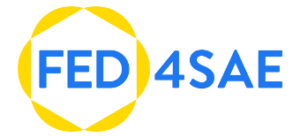Human fatigue monitoring for critical operation
PRESLEEP: a smart wearable for the automatic detection and prediction of the awake, drowsiness and sleeping staged
Human fatigue monitoring in industrial environments
Currently, the gold standard of the tests used by sleep medicine for the study of human sleep disorders and for the identification of the wakefulness, drowsiness, and sleeping stages is Polysomnography (PSG).
The PSG is an extremely complex instrumental examination that involves deploying on patients a set of sensors (from a minimum of 10 to over 30) that are in direct contact with various parts of the body, both external and internal, e.g., skin, scalp, nasal cavities. Using this set of sensors, the polysomnograph can record for hours, usually for one night, the main physiological functions of the patient such as brain electrical activity, body movements, cardiorespiratory activity, eyes movements, muscle tone, etc.
The PSG is therefore a useful but demanding exam for the patient and it requires highly specialized technical staff deploying the sensors on the subject to be studied and doctors with specific skills in sleep medicine for the analysis and interpretation of the recorded data. Moreover, PSGs are expensive and are limited by the number of beds available in the study centre and the number of specialists available to read and assess the data.
Therefore, there is a need to increase the quality of simplified and automatic tools for studying sleep disorders and for identifying the awake, drowsiness and sleep stages.

Smart wearable for physiological parameter monitoring
The PRESLEEP project was aimed at the fine assessment and validation of the proposed proprietary methodology/technology, for the automatic detection and prediction of wakefulness, drowsiness, and sleeping stages through a smart wearable, in a realistic operating environment.
The following objectives were set up at the start of the PRESLEEP project:
- complete development of the methodology for the automatic detection and prediction of the stages using real-time signal measurements and Artificial Intelligence techniques
- complete development of the smart wearable prototype and of the software components including the proprietary algorithm for the automatic detection and prediction of stages
- verification and validation tests of the smart wearable under realistic environmental conditions at AVL
- detailed definition of the smart wearable, hardware and software components, for the further industrialization process with a selected supplier.
A unique and patented IP, to detect the transition between the three behavioural states of a subject and to predict the sleep onset well before a person could lose the control of his/her activities was developed during the project.
Sleep and drowsiness onset detection
The IP fundamentally aims at the precise identification of the changes in cardiocirculatory activity typical of the phase preceding the entry into the sleep state.
The IP is based on a combined multi-factors and multi-domains real-time analysis and the required physiological parameters are extracted through photoplethysmography technology.
The IP detects precisely the drowsiness onset at a 1 minute resolution and predicts the sleep onset at least 5 minutes before the event.
FED4SAE support and opportunity
The following support was provided during the course of the project:
- Discussions about automotive business and especially oncoming regulation for drowsiness detection
- Technical support to interface with AVL IODP solution, and access to the driver monitoring testbed to generate relevant datasets to evaluate the proposed IP
- Funding through the open call for project
 |
Healtcare |
Sleep Advice Technologies S.r.l. is a start-up based in Italy combining sleep medicine know-how with electronic engineering skills.
Impact
- Drowsiness detection: automatic detection and prediction of the transition between wakefulness, drowsiness, and sleeping stages through a smart wearable
- Prediction of the time horizon when the subject will fall asleep (at least 5 minutes before the sleep onset) and detect the drowsiness onset (1 minute resolution)
- Patented solution
- Evaluation on industrial driver monitoring testbed
Supported by


![]()
Authors and Contributors: AVL, KTH, Digital Catapult, Sleep Advice Technology S.r.l.
All images © Sleep Advice Technology S.r.l.

